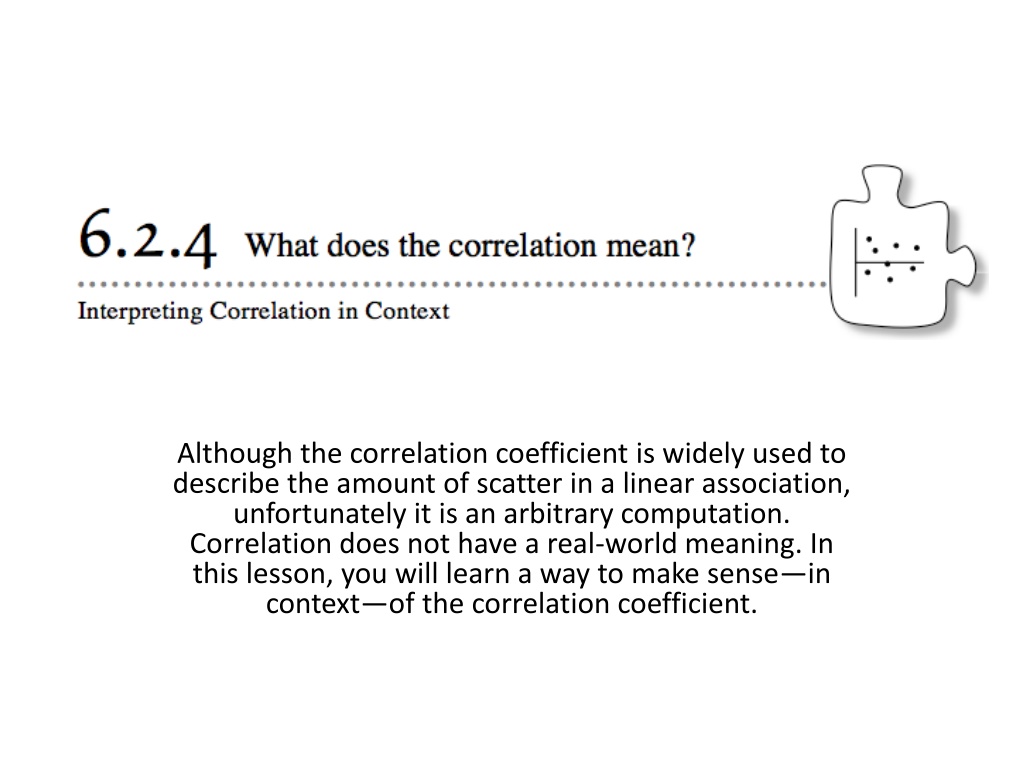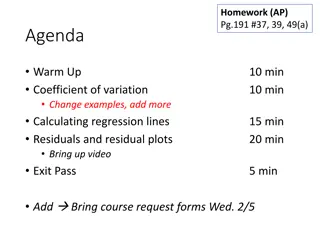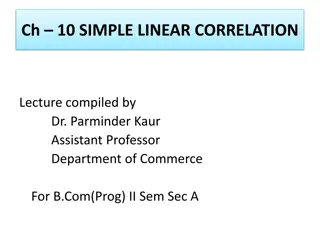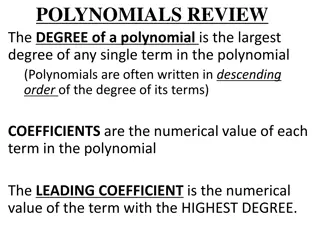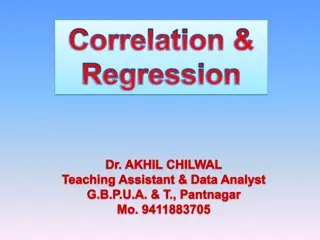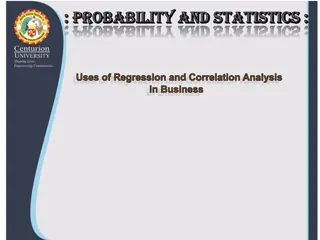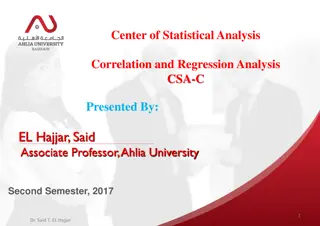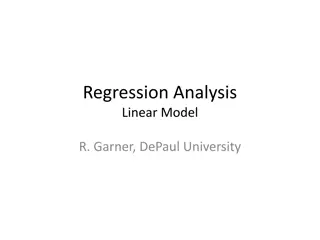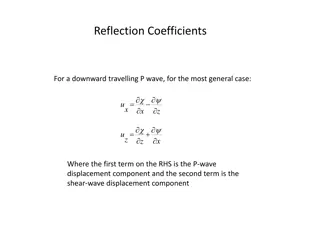Understanding Correlation Coefficients in Data Analysis
Learn how correlation coefficients can be used to make sense of scatter in linear associations. Explore examples of analyzing height and shoe size data, unusual datasets, scatterplots, and regression equations to understand the variability and predictability in different scenarios.
Download Presentation

Please find below an Image/Link to download the presentation.
The content on the website is provided AS IS for your information and personal use only. It may not be sold, licensed, or shared on other websites without obtaining consent from the author. Download presentation by click this link. If you encounter any issues during the download, it is possible that the publisher has removed the file from their server.
E N D
Presentation Transcript
Although the correlation coefficient is widely used to describe the amount of scatter in a linear association, unfortunately it is an arbitrary computation. Correlation does not have a real-world meaning. In this lesson, you will learn a way to make sense in context of the correlation coefficient.
6-91. In Lesson 6.1.3, Kerin discovered that a humans height is associated with their forearm length. Kerin is curious whether height is also associated with foot size. a) It wasn t practical for Kerin to measure her classmates feet, so Kerin collected the following shoe-size data from her classmates. Read the Math Notes box that follows this lesson. Use the definition of R2from the Math Notes box, and the data below, to write a sentence about the variation in height in Kerin s class. If only a portion of the variability in height can be explained by shoe size, what other factors might go into determining someone s height?. b)
6-92. Suppose Alyse collected the following data for five random students in her class: a) What is the correlation coefficient? Why is the data unusual? In the context of this problem, what does the correlation coefficient tell Alyse about the association between height and shoe size for these very unusual students? What can Alyse say about the variability in height in her unusual class? What can she say about predicting height for a student? b)
6-93. Holly created the scatterplot shown at right for the girls in her class. a) What do you notice about the pattern of this data? What do you suppose the correlation coefficient is? Write a sentence about the variability in girls height in Holly s class. The best prediction Holly can make is that a girl has average height no matter what her test score was. Holly calculated the average height of the girls in her class to be 162 cm. What would the line of best fit look like? What is the equation of the line of best fit? b)
6-94. When Giulia went around town in problem 6-48 comparing the cost of toppings at pizza parlors, she gathered this data. a) What is the LSRL? Interpret the y-intercept in context. What are the correlation coefficient and R2? In problem 6-48 you wrote a report describing this association. Now improve upon the report by making it more mathematical. Use slope when describing the direction, and use a sentence about R2when describing strength. b) c)
6-95. Giulias father finally opened his pizza parlor. He charges $7.00 for each cheese pizza plus $1.50 for each additional topping. a) Choose four or five points and make a scatterplot of the cost of pizza versus the number of toppings at Giulia s father s pizza parlor. What is the LSRL? Interpret the slope and y-intercept in context. b) What is r? R2? Write a sentence about the variation in cost of pizza at this parlor. Explain, in context, the difference between this R2and the one that you calculated in problem 6-94.
6-96 A researcher wanted to see if there was an association between the number of hours spent watching TV and students grade point averages. He found r = 0.72. Interpret the researcher s results.
6-97 Suppose you found that the correlation between the life expectancy of citizens in a nation and the average number of TVs in households in that nation is r = 0.89. Does that mean that watching TV helps you live longer?
